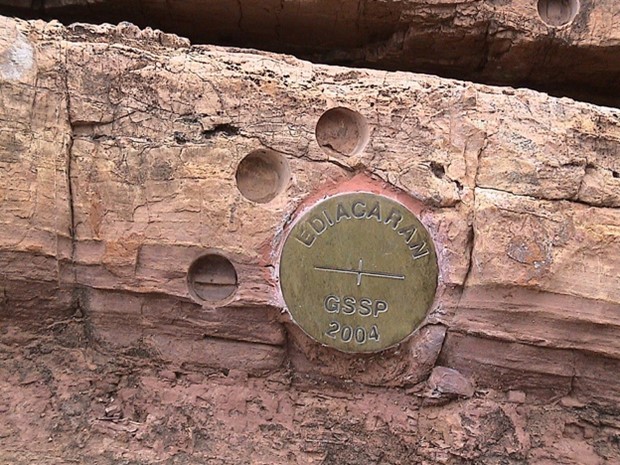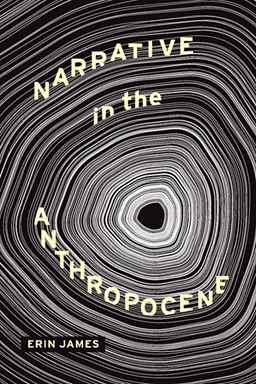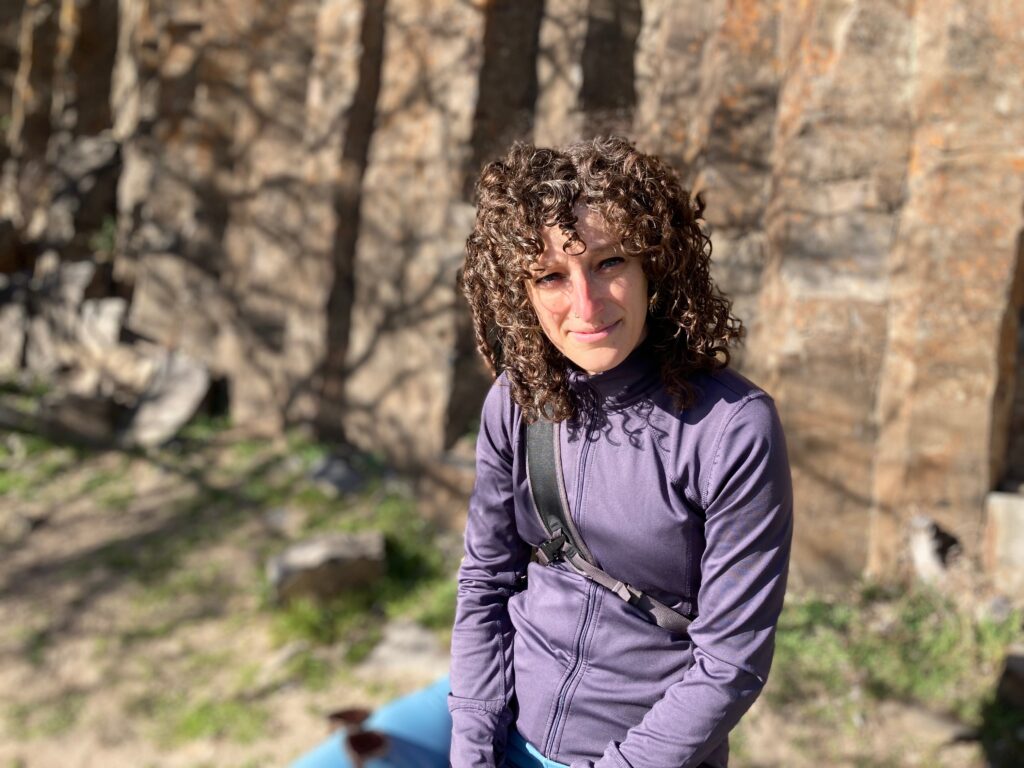By Erin James
I wrote much of my new book, Narrative in the Anthropocene, in the wake of a crucial vote by the Anthropocene Working Group (AWG). On May 21, 2019, by a margin of 88 percent in favor, the AWG voted to approve the Anthropocene as an official epoch, the successor to the Holocene. The search is now on for the “golden spike,” or the most obvious and legible of signal in the geologic strata to date establish the starting date of the epoch. Geologists have suggested many golden spikes, all of which in turn suggest many different narratives of the Anthropocene – everything from the invention of the steam engine in 1784 to human-driven mass extinctions 50,000 to 10,000 years ago, the discovery of agriculture thousands of years ago, the first appearance of the genus Homo over two and a half million years ago, the first cave paintings 40,000 years ago, the beginning of the printing revolution in 1439, and the invention of chlorofluorocarbons in 1920. The AWG itself argues that the Anthropocene’s beginning is best placed in the mid-twentieth century because of the proliferation of geological proxy signals visible in recently accumulated strata that have resulted from the population growth, industrialization, and globalization of the Great Acceleration. The search is now on for the one geologic marker that provides the most convincing geologic sign of human activity.

Figure 1. Golden spike marking the end of the Ediacaran period, 635 million years ago.
What interests me about this search is its declaration that the Anthropocene, by definition, is a concept that hinges upon humans writing the world. The scientists of the AWG root their understanding of our current epoch in a specific physical marker, a semiotic sign that records the ability of humans to reshape the material world in which we live. The AWG’s definition of the Anthropocene depends upon the recognition that (some) humans in this epoch literally write the world in our own image and inhabit that changed reality. This fascinates me because I understand narratives, too, as records of humans writing and inhabiting worlds for some purpose. My book is driven by the work that narratives demand of us – the cognitive, imaginative, and emotional work that goes into interpreting the stories we read, watch, listen to, and tell. Cognitive scientists and narrative scholars that study this work argue that, to interpret a narrative, we must mentally model and imaginatively transport ourselves to the world of the story; we must shift from the here and now of our actual world to the alternate world of a story to understand a narrative. This research argues that worldbuilding and inhabitation is essential to narrative comprehension.
Differences between the Anthropocene’s golden spike and readers’ transportation to narrative worlds apply, of course. The AWG’s definition of the Anthropocene involves physical markers of human activity in the real world, while narrative comprehension demands that we mentally translate symbolic cues into an imagined world to which we then mentally shift. Yet the similarities between the two are rich and productive, as both the Anthropocene and narrative comprehension involve the inhabitations of worlds that begin in the imagination of humans and reflect back to us our own attitudes, values, and behaviors. In this sense, both the epoch and narratives are products of distinctly human forms of cognition that stand to have powerful real-world effects.
My central claim is that, if the Anthropocene is the product of some humans writing a specific world and then living in it, narratives offer us fertile ground by which to study the processes and purposes of world construction and inhabitation. Narratives, in other words, provide us with an offline context in which to explore imaginative world-creation – the very same process that has brought about the Anthropocene. It is thus not only that the wrong type of narratives can play a central role in exacerbating the Anthropocene’s environmental crisis and the right type in alleviating it, as many environmental humanities scholars argue. It is also that narratives, at their core, can help us understand how humans write and inhabit worlds, thereby shedding light on the irrevocable human writing of an altered real-life, material world in the Anthropocene.
 I push this claim in different directions in the book. Some of those directions are critical of the concept of the Anthropocene, especially in the tendency of the AWG and its peers to collapse all humans into the same category – to conceive of the entire species as contributing equally to the formation of the epoch. Some directions are generative, such as in my reconceptualization of narrative as worldbuilding for some purpose and my reading, building on the work of new materialists, of the material narrativity of non-human matter such as geologic strata, ice cores, and tree rings. Some directions offer a radical challenge to environmental humanities scholars to be more sensitive to narrative forms, or the building blocks of time, space, narration, etc., of the stories that we tell about the environment. If all stories task us with modeling and inhabiting a specific world, all stories – not just those explicitly featuring climate change in their content – offer us a guide for studying the very processes of worldmaking at the root of the environmental crisis.
I push this claim in different directions in the book. Some of those directions are critical of the concept of the Anthropocene, especially in the tendency of the AWG and its peers to collapse all humans into the same category – to conceive of the entire species as contributing equally to the formation of the epoch. Some directions are generative, such as in my reconceptualization of narrative as worldbuilding for some purpose and my reading, building on the work of new materialists, of the material narrativity of non-human matter such as geologic strata, ice cores, and tree rings. Some directions offer a radical challenge to environmental humanities scholars to be more sensitive to narrative forms, or the building blocks of time, space, narration, etc., of the stories that we tell about the environment. If all stories task us with modeling and inhabiting a specific world, all stories – not just those explicitly featuring climate change in their content – offer us a guide for studying the very processes of worldmaking at the root of the environmental crisis.
Instead of only querying how realistically a narrative represents climate change, or how committed an author is to shifting their audience’s attitude towards climate change, I urge us to ask: what type of world does this text encourage readers to model? What attitudes, values, and behaviors does this world rely upon and assume? What relationship between humans and their environment does this story assume? What role do the values, attitudes, and behaviors of the storyworld play in driving the anthropogenic climate change that defines the Anthropocene in the real-world? How does the world of this narrative foreclose, suppress, or deny other, alternate worlds that rely upon other, alternate attitudes, values, and behaviors? Expanding our methodology to include these questions encourages us to read back, appreciating how older narratives written before the arrival of the Anthropocene as an organizing concept present readers with tools for mentally modeling and imaginatively inhabiting specific worlds that have real-world effects. It thus opens up discussions of “Anthropocene narratives,” or “cli-fi,” to include the work of, say, Jane Austen, in addition to Jeff VanderMeer and Octavia Butler.
I also connect the idea that narrative is a vital tool by which to access and unpack human processes of worldbuilding to interdisciplinary, public humanities work, such as that of the Confluence Lab, an initiative that I co-founded and co-direct with my colleagues Jenn Ladino and Teresa Cavazos Cohn. The Confluence Lab brings together scholars in the arts, humanities, and sciences, along with community members, to address environmental issues impacting rural communities such as that of my current hometown in Moscow, Idaho. Our central premise is that the tools of the humanities and the arts – especially those related to storytelling, representation, emotions and communication – are important complements to scientific knowledge and can help develop novel approaches to environmental issues. Narrative sits at the heart of many of the conversations that Jenn, Teresa, our collaborators, and I have had over the past few years, and much of our work explores the idea that narratives themselves are valuable data that advances our understanding of the mechanisms by which anthropogenic climate change functions and can be course-corrected. Narrative in the Anthropocene thus offers up specific methodologies by which artists and environmental humanities scholars can participate in interdisciplinary projects that analyze climate change by considering stories as data.
Above all, Narrative in the Anthropocene claims that we understand better the current state of the planet and our relationship to it by engaging with narrative. It is no secret that a disparity exists between scientific warnings about climate change and existence of legislation and policies that address such warnings, particularly among those populations whose behaviors and lifestyles contribute most to rising temperatures. So too have international legislation and policies designed to reduce climate change been dogged by misunderstanding, frustration, and resistance to change. I do not suggest that a golden ticket narrative exists, that by studying narrative in this epoch we can unearth the “perfect” story to shift public opinion, address the gross inequalities and injustices of climate change, and spur action towards a more responsible way of living in the world. But I do suggest that a more solid understanding of how narrative works in this moment – of what narrative resources tend to lend themselves to particular ideologies, of how narrative is changing to accommodate or respond to new material, social, and political realities, and of what work narratives do to readers and the world in which they read – will help us better understand how humans worldbuild for some purpose in the Anthropocene. This stands for the imaginary and virtual storyworlds of narratives and the real-life, material world that many humans are fast rewriting in their own image. My narrative of the Anthropocene is thus one in which scholars turn to stories and storytelling not as a panacea, but as a model by which we can think through our assumptions about our relationship to the world and our role in it.
 Erin James is a Professor of English and Affiliate Faculty of Environmental Science at the University of Idaho. Her previous book, The Storyworld Accord: Econarratology and Postcolonial Narratives (University of Nebraska Press 2015), won the International Society for the Study of Narrative’s (ISSN) 2017 Perkins Prize and was a finalist for the ASLE Ecocriticism Book Award that same year. She has published essays in DIEGESIS, SubStance, the Journal of Narrative Theory and Poetics Today, as well as Environment and Narrative: New Directions in Econarratology, which she co-edited with Eric Morel (Ohio State University Press 2020). She is a Co-Founder and Co-Director of the Confluence Lab, the Mentoring Program Co-Coordinator (along with Elizabeth Dodd) for ASLE, and the 2022 President of the ISSN.
Erin James is a Professor of English and Affiliate Faculty of Environmental Science at the University of Idaho. Her previous book, The Storyworld Accord: Econarratology and Postcolonial Narratives (University of Nebraska Press 2015), won the International Society for the Study of Narrative’s (ISSN) 2017 Perkins Prize and was a finalist for the ASLE Ecocriticism Book Award that same year. She has published essays in DIEGESIS, SubStance, the Journal of Narrative Theory and Poetics Today, as well as Environment and Narrative: New Directions in Econarratology, which she co-edited with Eric Morel (Ohio State University Press 2020). She is a Co-Founder and Co-Director of the Confluence Lab, the Mentoring Program Co-Coordinator (along with Elizabeth Dodd) for ASLE, and the 2022 President of the ISSN.
